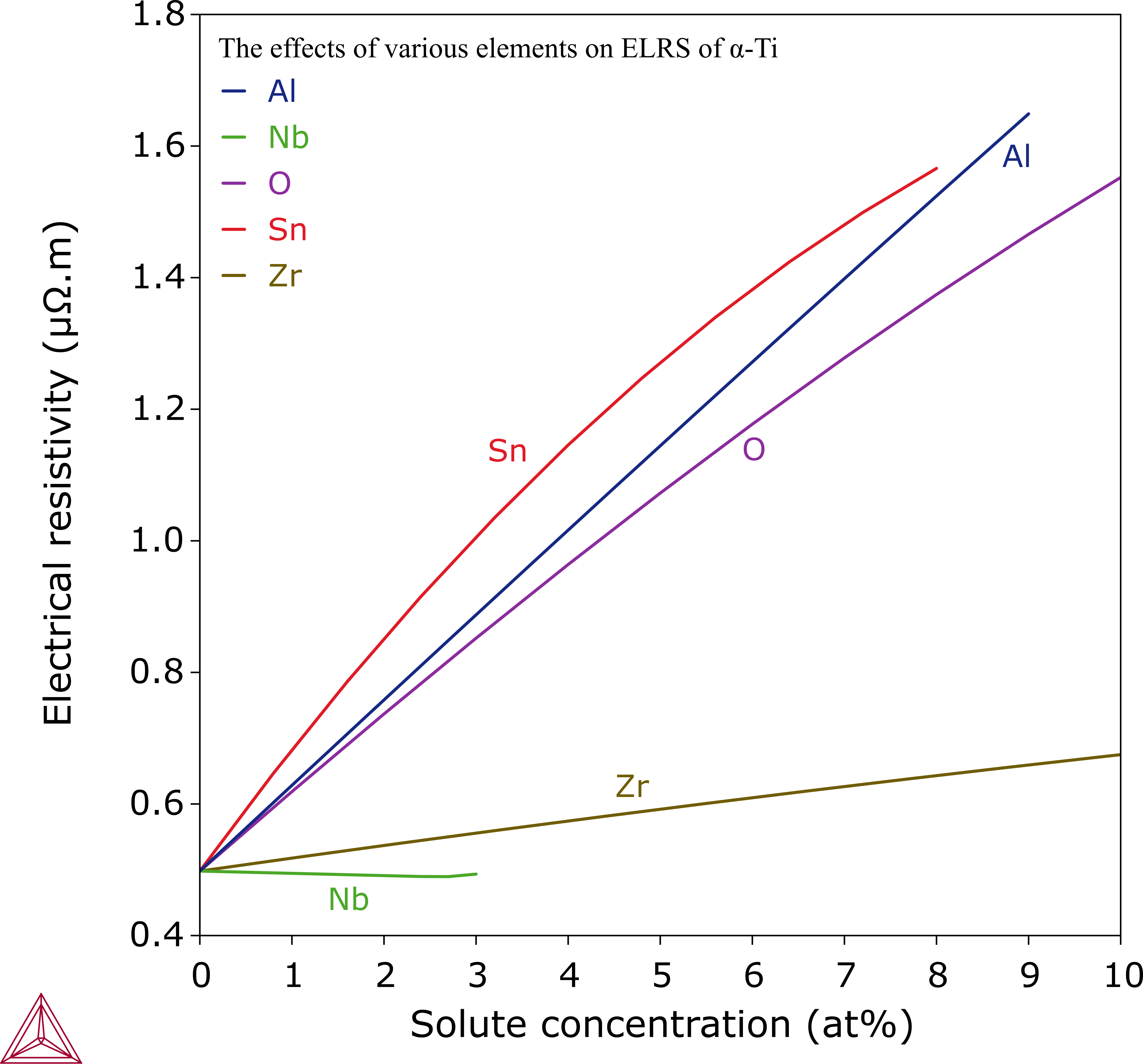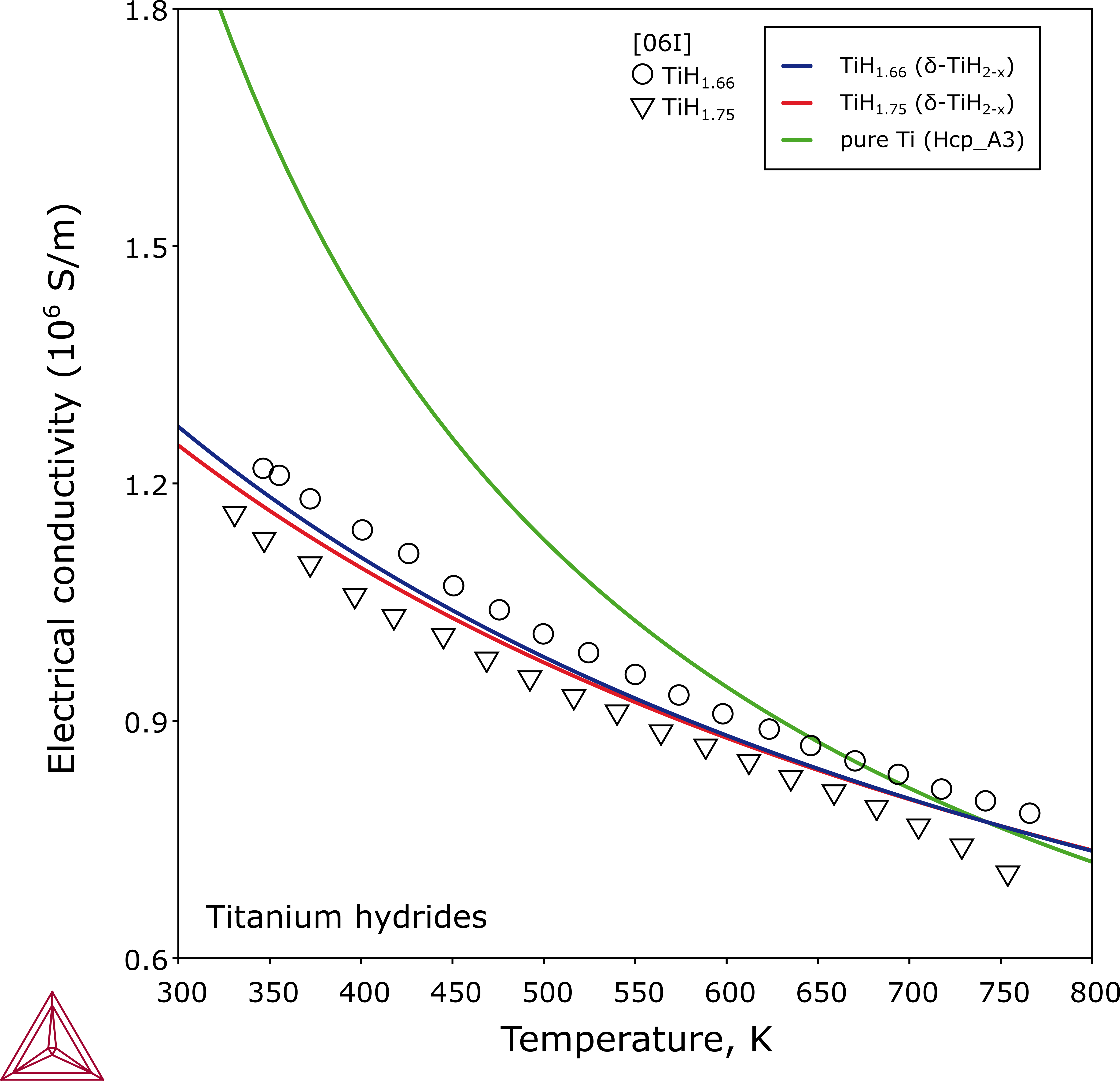Electrical Resistivity and Conductivity of Titanium Alloys
A better understanding of electronic properties of alloys is beneficial to investigate alloying behavior and effects in solid solutions, as well as to facilitate studies on mechanical properties of titanium alloys.
Using Thermo‑Calc with the TCS Ti/TiAl-based Alloys Database (TCTI), you can calculate the quantities of a phase φ with the variable ELRS (φ) or a system (i.e. alloy) with ELRS. You can also calculate the derived quantity, i.e. electrical conductivity (ELCD) in a similar way.
The database includes electrical resistivity starting with version 4 (TCTI4).
Electrical Resistivity for Some Ti-based Alloys
In this example, the electrical resistivities for various alloys at room temperature are plotted as a function of alloy composition. The plot shows that the transition elements which lie close to titanium in the periodic table (i.e. Zr, Nb) bring about a relatively small increase in the resistivity of α-titanium, while the non-transition elements, whether substitutional or interstitial, appear to have a much greater effect.
Electrical Conductivity of Ti Metal and Ti Hydrides
In addition to electrical resistivity, you can also make calculations for electrical conductivity (ELCD) in the field of Ti alloys and titanium compounds. This plot shows the temperature dependence of electrical conductivity of titanium metal and its hydrides. The electrical conductivity of titanium hydride that exhibited metal-like temperature dependence is slightly lower than that of pure titanium and almost independent of the hydrogen content.
Figure 2: Calculated electrical conductivity of Ti metal and titanium hydrides.
Reference
[2006Ito] M. Ito, D. Setoyama, J. Matsunaga, H. Muta, K. Kurosaki, M. Uno, S. Yamanaka, Electrical and thermal properties of titanium hydrides. J. Alloys Compd. 420, 25–28 (2006).

